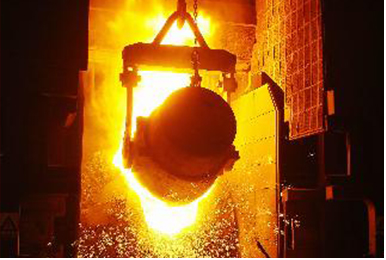Nov . 13, 2024 20:51 Back to list
primary steel making
Primary Steel Making An Overview
Steel is one of the most essential materials in modern civilization, forming the backbone of various industries including construction, automotive, and manufacturing. The primary process of steel making is crucial, involving the transformation of raw materials into high-quality steel products. This article delves into the primary steel-making process, the raw materials used, and the environmental considerations associated with it.
The primary steel-making process primarily consists of two methods the Basic Oxygen Process (BOP) and the Electric Arc Furnace (EAF). The BOP is the most common method for production, accounting for over 70% of global steel output. It involves converting molten iron—produced in a blast furnace—from its initial state to steel by blowing oxygen through it. This oxygen reacts with carbon and other impurities in the molten iron, producing heat and resulting in the formation of steel. The key raw materials for this method include iron ore, coke (carbon), and limestone, which acts as a flux to remove impurities.
On the other hand, the EAF method uses electricity to melt scrap steel, making it a more sustainable option. This method is particularly advantageous because it recycles existing steel, significantly reducing the demand for new raw materials. EAF represents a growing segment of the steel industry due to its ability to produce steel with a lower environmental impact. It is especially favored in regions with ample electricity supply from renewable sources.
primary steel making

The efficiency of primary steel making has improved significantly over the years, thanks to advancements in technology and process optimization
. Innovations such as continuous casting and the use of high-performance refractories minimize energy consumption and enhance productivity. Furthermore, the integration of automation and real-time data analytics in steel mills has led to considerable improvements in the quality of the final product, ensuring that modern steel meets the stringent specifications required by various industries.However, the steel-making process is energy-intensive and has considerable environmental implications. The production of steel is a significant source of carbon dioxide (CO2) emissions, contributing to climate change. The steel industry is actively seeking ways to mitigate its carbon footprint. This includes investing in carbon capture and storage technologies, enhancing energy efficiency, and exploring the potential for hydrogen as a reduction agent in place of carbon. The development of green steel—produced with minimal environmental impact—is becoming a vital focus for manufacturers.
In conclusion, primary steel making is a cornerstone of the global steel industry, vital for meeting the demands of a modern economy. The transformation of raw materials into high-quality steel through processes like the Basic Oxygen Process and Electric Arc Furnace has undergone significant advancements, making the process more efficient and sustainable. However, the environmental challenges associated with steel production necessitate ongoing innovation and a commitment to reducing carbon emissions. As the industry moves toward a more sustainable future, the importance of primary steel making will remain, driving economic growth while addressing the pressing environmental issues of our time.
-
Fe-C Composite Pellets for BOF: Enhance Steelmaking Efficiency
NewsAug.07,2025
-
Eco-Friendly Granule Covering Agent | Dust & Caking Control
NewsAug.06,2025
-
Fe-C Composite Pellets for BOF: High-Efficiency & Cost-Saving
NewsAug.05,2025
-
Premium Tundish Covering Agents Exporters | High Purity
NewsAug.04,2025
-
Fe-C Composite Pellets for BOF | Efficient & Economical
NewsAug.03,2025
-
Top Tundish Covering Agent Exporters | Premium Quality Solutions
NewsAug.02,2025
